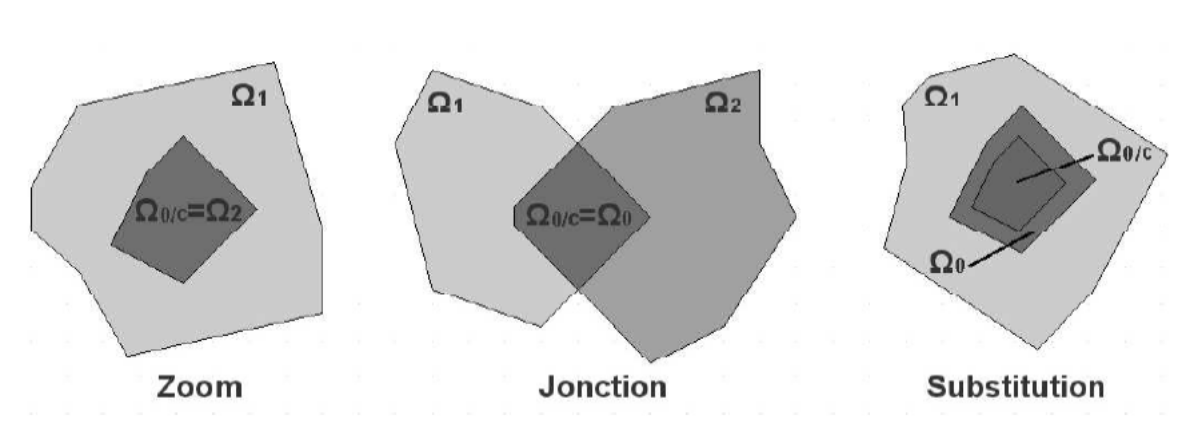3. What uses can be made of this modeling?#
Currently, it is possible to consider three types of use of the Harlequin method:
Zoom: This type of application aims to detect and study a local phenomenon (contact, crack,…) at the level of a specific area belonging to a global domain. A fine patch is then superimposed on the existing rough model, in order to refine the solution to the neighborhoods of the areas of interest. In this case, the gluing zone is equal to one of the sub-domains.
The junction: The main purpose of this application is to link two models that may be of different types and/or fineness. In this configuration, the bonding zone is strictly equal to the zone of overlap of the two domains.
Substitution: This operation consists in substituting an existing model locally with a finer one. This technique is very useful for introducing, with great flexibility, a defect in a healthy model such as cracking. Contrary to the two previous cases, by applying substitution, the gluing zone constitutes a sub-domain of the overlap zone of the two models.

Figure 3-a different uses of the 1D-3D connector in the Harlequin frame